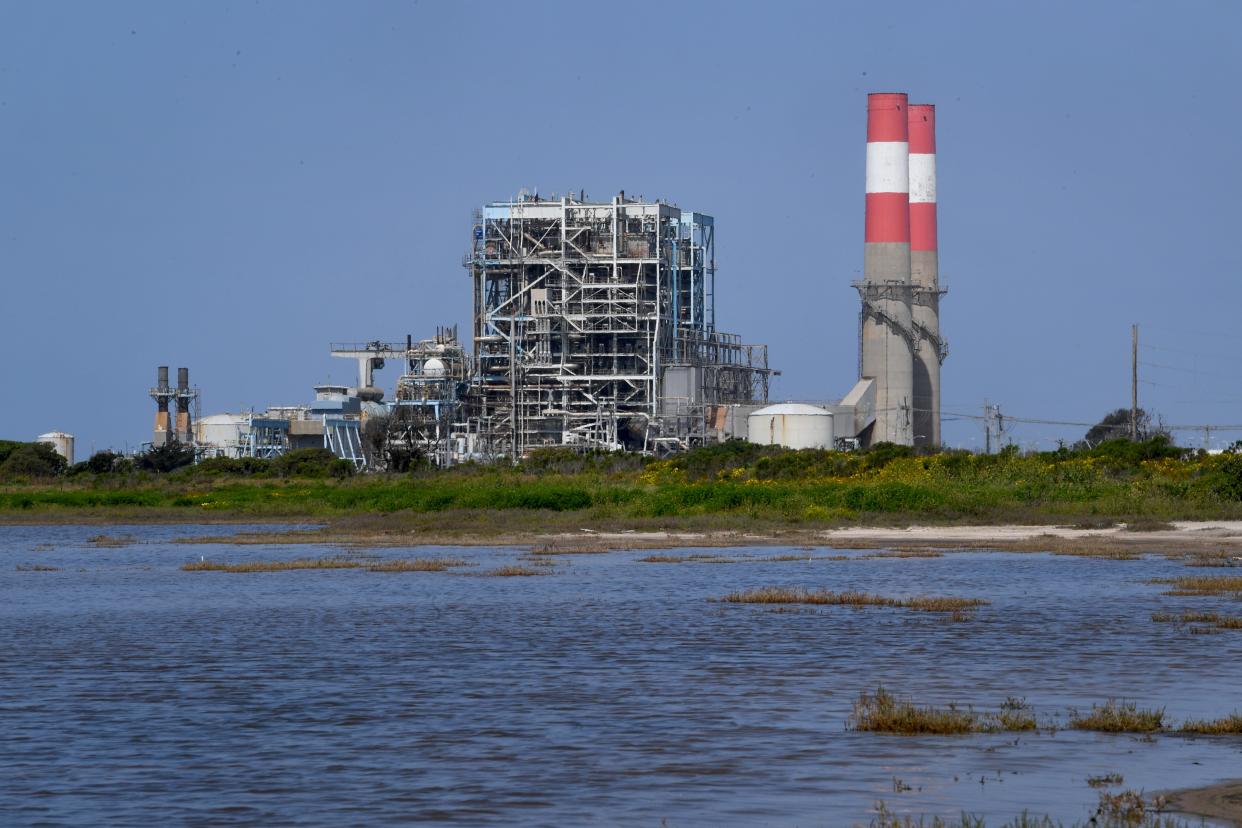Oxnard officials, activists upset Ormond Beach Generating Station's life extended 3 more years

The city of Oxnard and local activists will continue to fight for the closure of the Ormond Beach Generating Station after the facility recently received a second three-year operating extension.
“This motivates us more to make sure there isn’t another extension and to make sure it's truly shut down,” said Sofia Magallon, an environmental justice policy advocate with Central Coast Alliance United for a Sustainable Economy, or CAUSE.
GenOn, the Texas-based owner and operator of the Oxnard facility, said they’re only continuing to run the plant because they’re mandated by the state.
The State Water Resources Control Board voted unanimously last week to extend the life of four seawater-cooled power plants. The others are in Long Beach, Huntington Beach and Playa Del Rey.
The Ormond Beach plant was originally scheduled for decommission in 2020, but the state water board extended its operation until December of this year. The power plant, along with the Long beach and Huntington Beach facilities, received a three-year respite on Aug. 15. The three power plants will now shut down on Dec. 31, 2026.
The Playa Del Rey plant will shut down in December 2029.
The state water board, in a statement, said the decision was based on a shortfall in power as California continues to transition to renewable energy sources.
Oxnard City Manager Alex Nguyen said he will “fight vehemently” to prevent the Ormond Beach facility from receiving a third extension. He said the state needs to find other ways to redistribute the power grid burden instead of extending the life of the Oxnard facility.
Once the power plant is decommissioned, Oxnard can begin reclaiming its coast.
The Ormond Beach facility fronts a sandy beach at the city’s southeast tip at the end of Edison Drive. It’s mostly surrounded by agricultural fields.
The power plant first went online in 1971 and was built by Southern California Edison, said Eric Watts, GenOn's chief commercial officer. It was common at that time for such plants to be built on the coast as seawater-cooling technology was widely used, he added.
Oxnard will receive a combined $35 million from GenOn once the power plant finally shuts down through two agreements. The money will be used to demolish the facility, remediate the area and build public amenities.
Nguyen said the city had to negotiate with GenOn to secure the funds.
“We’ve just been making lemonade out of these state-mandated lemons,” he said.
CAUSE was one of over a dozen organizations across the state that petitioned the state water board to let the power plants shut down.
The nonprofit collected about 1,200 signatures from residents who were against the extension and attended last week’s water board meeting.
Magallon, an advocate with CAUSE, said the use of the facility will continue to put marine life and local communities in harm's way.
Because the power plant uses seawater to cool itself, marine life can get sucked into the cooling mechanism.
Watts, of GenOn, said the chances of something getting pulled into the facility along with the seawater is low. For every one million gallons used to cool the facility, .00002 pounds of marine life and other material get pulled in with the water, he said.
Screens and bars are in place to help keep out the marine life.
The power plant also emits toxins that when breathed in by the public can lead to asthma and other respiratory diseases, Magallon said.
She pointed to a report by the Regenerate California coalition that found the Ormond Beach power plant pumped out 13 times more nitric oxide and nitrogen dioxide during a heat wave last summer when compared to average emission levels. The coalition, led by the California Environmental Justice Alliance and the Sierra Club, seeks to shut down fossil fuel power plants in favor of renewable energy sources. CAUSE is a partner in the group.
While the Ormond Beach plant does emit pollutants when running, Watt said the emissions are low.
The facility makes up 3.6% of all stationary sources of nitric oxide and nitrogen dioxide emissions in Ventura County, Watts said. When cars and other mobile sources are included, the Ormond Beach power plant makes up less than 1% of those emissions, he added.
While some in the community oppose the continued use of the facility, Watts said it rarely operates and is usually used to stabilize the power grid.
It has the potential to produce up to 1,491 megawatts per hour, he said.
Watts did not know how many days the facility turns on each year, though it tends to operate more between July and September. It only powers up when the California Independent System Operator — which manages the state's electric grid ― tells GenOn to turn on the plant, he said.
The Oxnard power plant is also powered on for maintenance purposes, Watts added.
“Without these plants' availability, the electrical grid system would be in jeopardy of failures,” Watts said.
Under the latest extension, the facility will only be used in "extreme" emergency situations to prevent outages. Watts said the plant should operate less under the new agreement.
Brian J. Varela covers Oxnard, Port Hueneme and Camarillo. He can be reached at brian.varela@vcstar.com or 805-477-8014. You can also find him on Twitter @BrianVarela805.
This article originally appeared on Ventura County Star: Ormond Beach power plant's operating extension gets pushback

